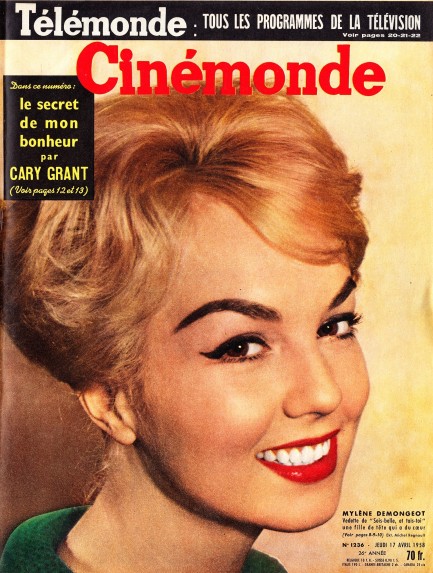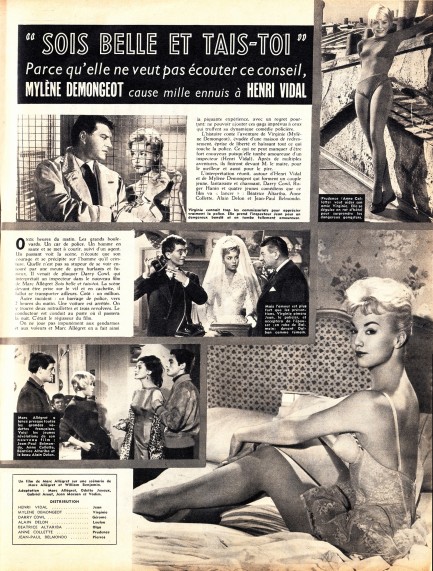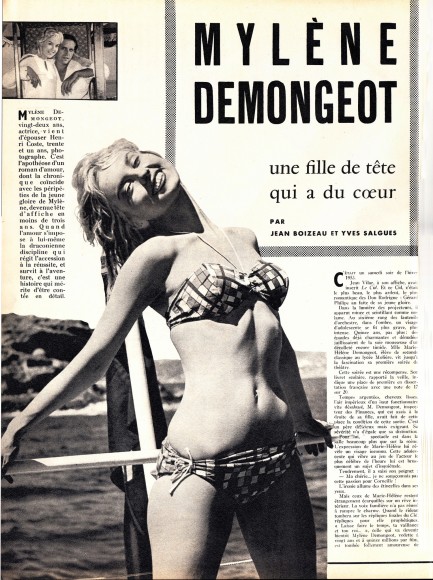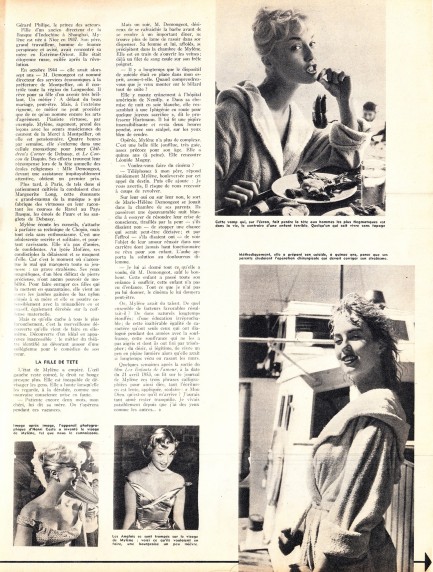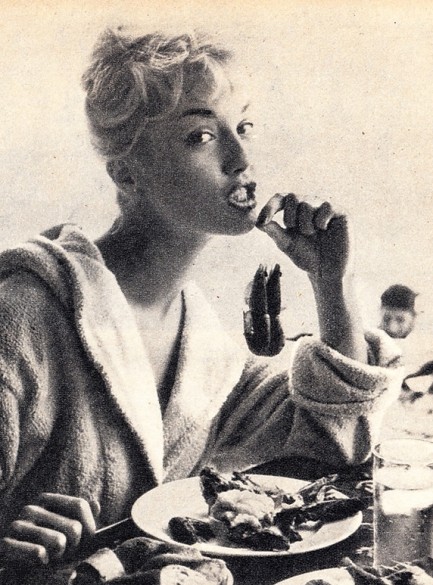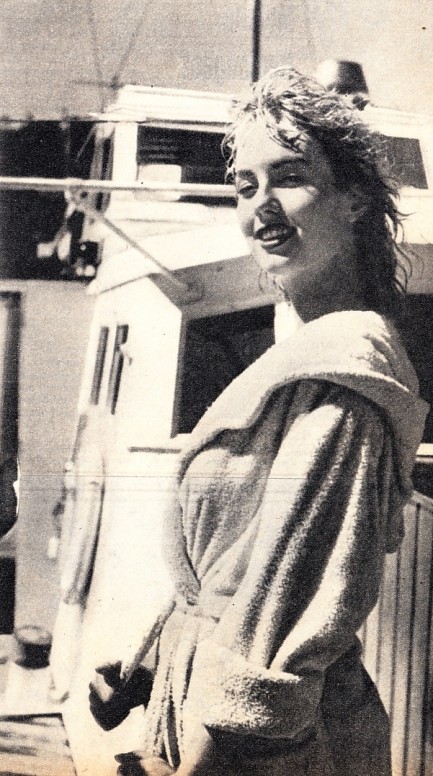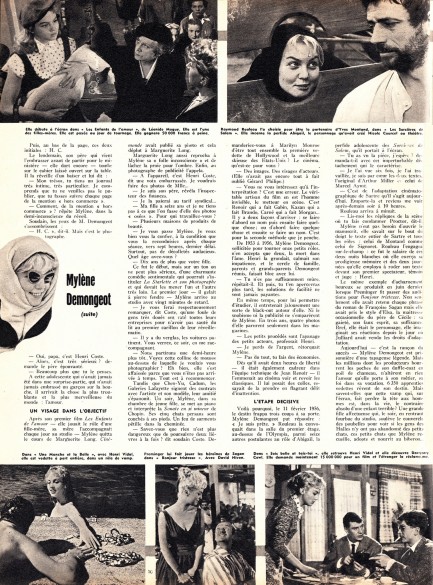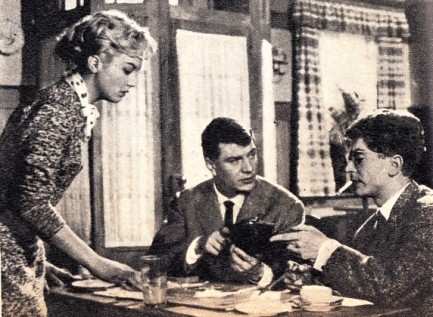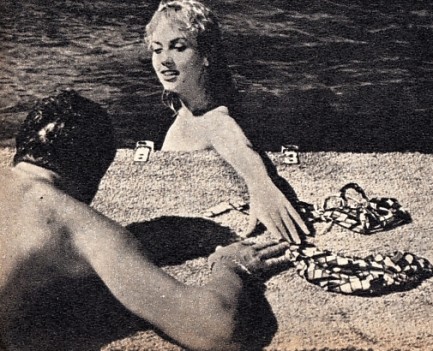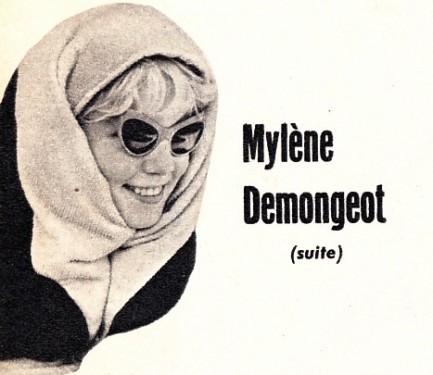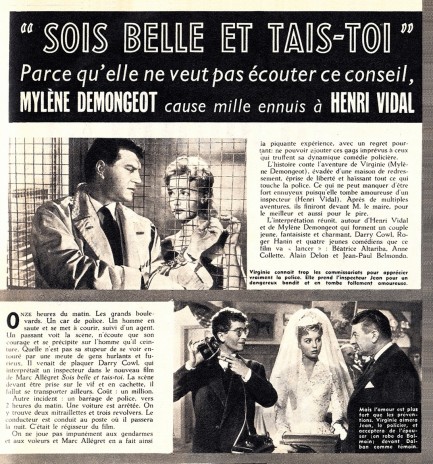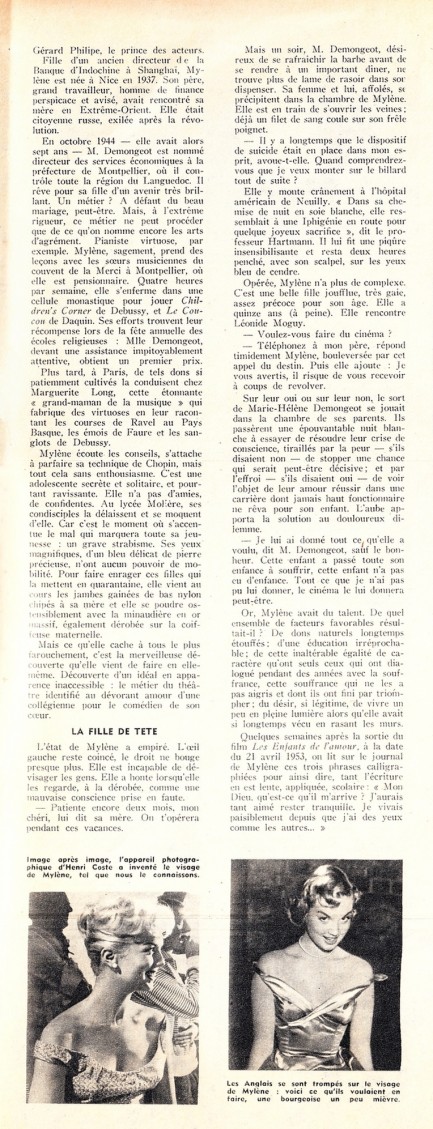 From stem to stern everything is in perfect condition. 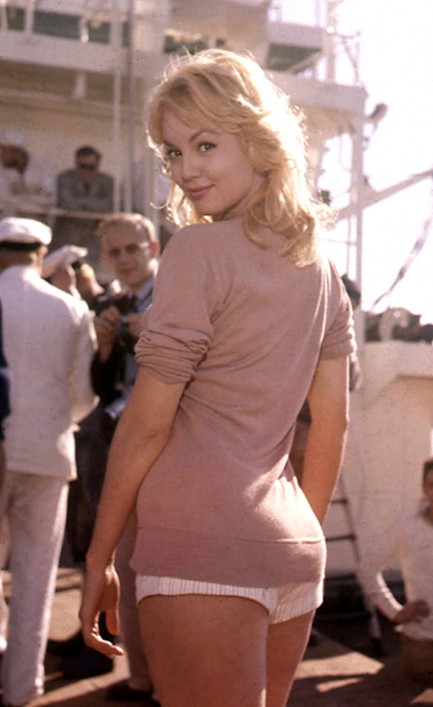
Above: French actress Mylène Demongeot, who we revisit regularly, appears here in another promo image for her 1960 seagoing adventure Sotto dieci bandiere, aka Under Ten Flags. Demongeot took shorts to new heights—literally—which we've talked about before. We should talk about Sotto dieci bandiere too, but it'll have to wait until later.
 Demongeot heats up and cools down. 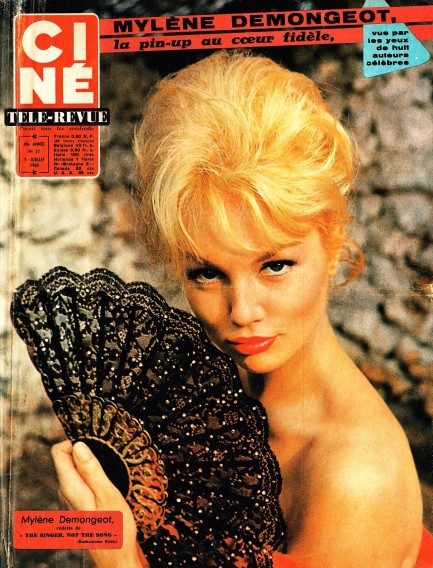
There are Bardot people and there are Demongeot people. We're Demongeot people. Well, not really, because there's no need to make a choice. But we like French actress Mylène Demongeot quite a bit. Like Bardot, she made many romantic comedies, but also succeeded in dramas and was nominated for a BAFTA in 1957 and two César awards in 2005 and 2007. What's more she's still working. Her latest film is this year's Maison de retraite. The above issue of the French pop culture magazine Cinémonde features Demongeot on the cover keeping cool with a Spanish fan. She's one of the hottest stars in French cinema at this stage, in July 1960, with hits like 1961's Les trois mousquetaires and 1962's Copacabana Palace just around the corner.
The magazine also offers four pages of Demongeot inside, including a photo with the interesting caption, “Mylène Demongeot – une flamme pure de l'enfer,” which means “a pure flame of hell.” We assume that's a compliment. Another of the photos is our favorite of Demongeot. It shows her in some sandy niche of Torremolinos, Spain playing guitar (or seeming to) during the filming of The Singer Not the Song. Are you feeling a sense of déjà vú with her and this magazine? That may because we've featured her in two other issues. You can see those here and here. If you aren't Demongeot aficionados we recommend watching Bonjour Tristesse or Upstairs and Downstairs. Also, for those of an aesthetic mindset, you can see her at her most beautiful here and here. 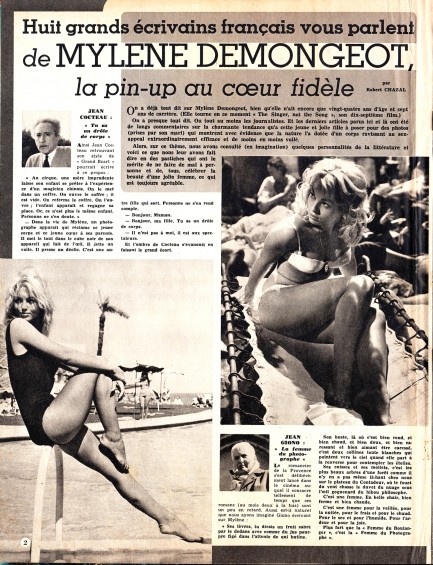 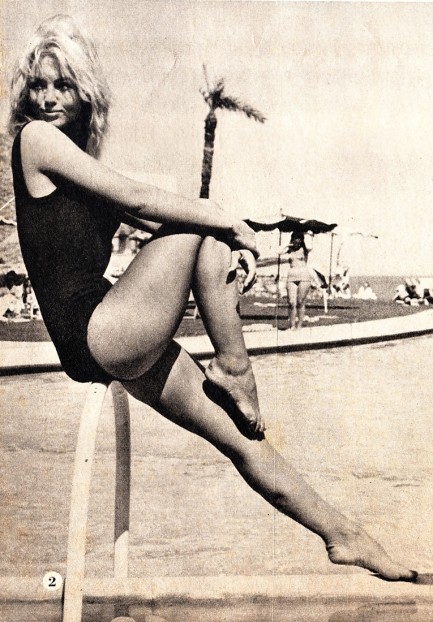 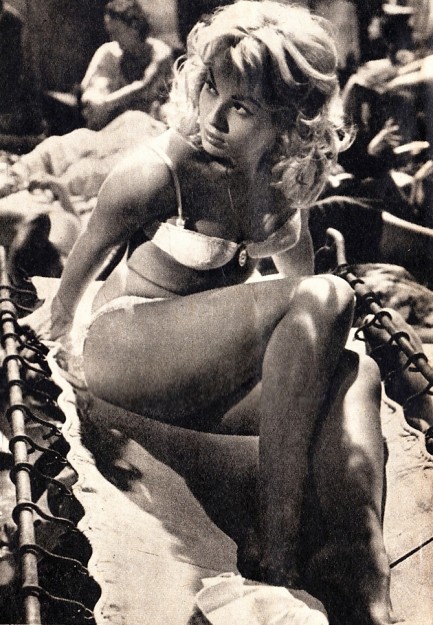 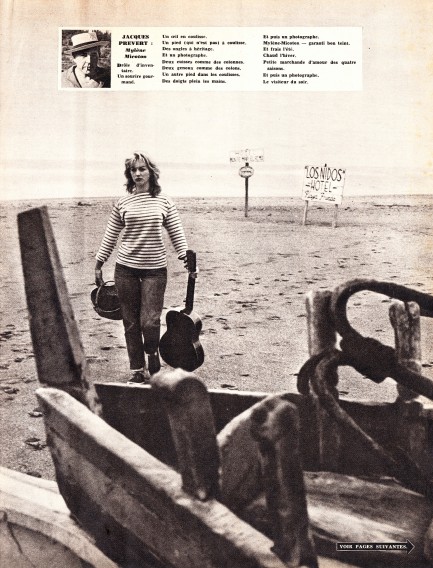 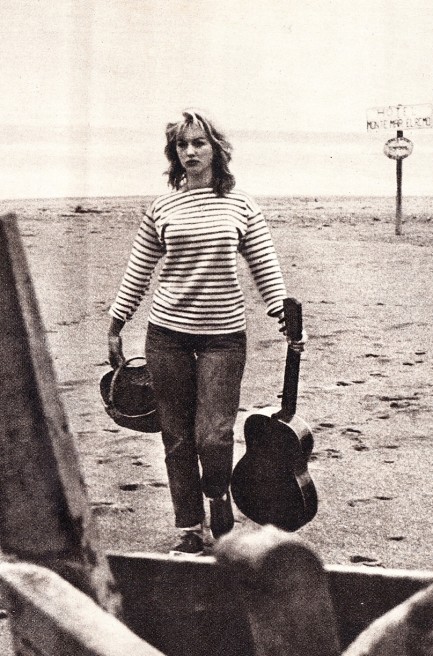 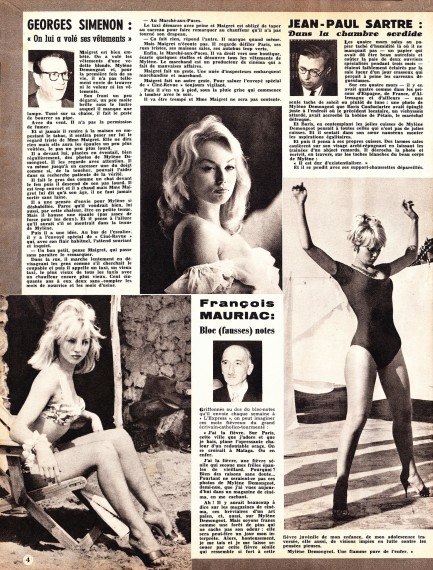 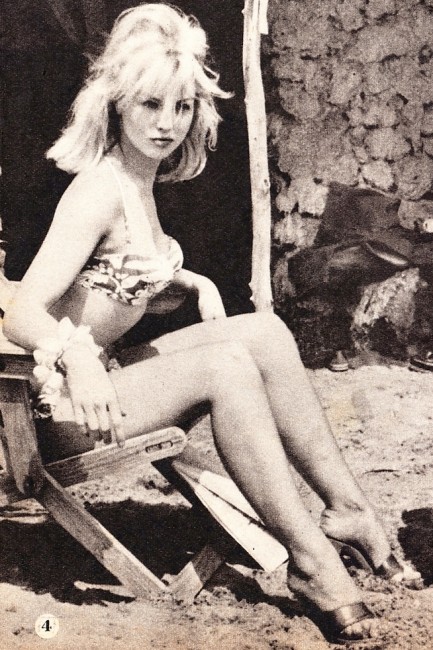 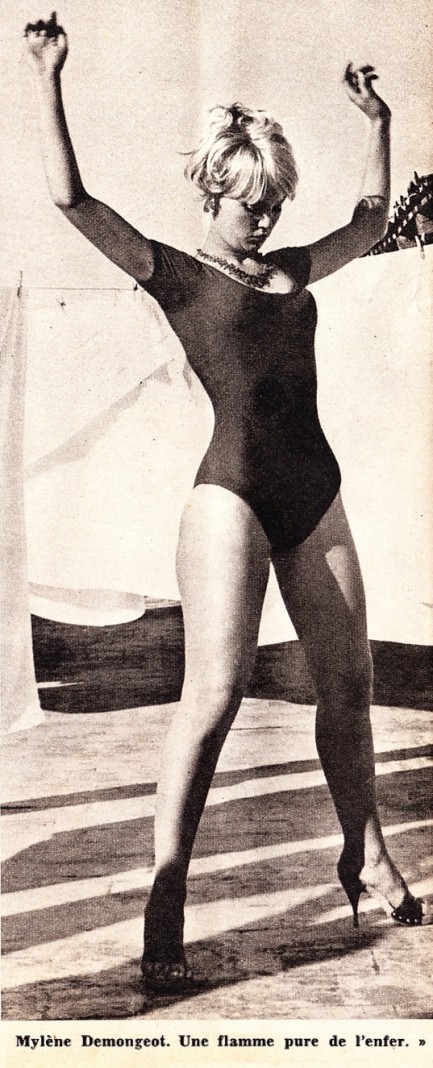 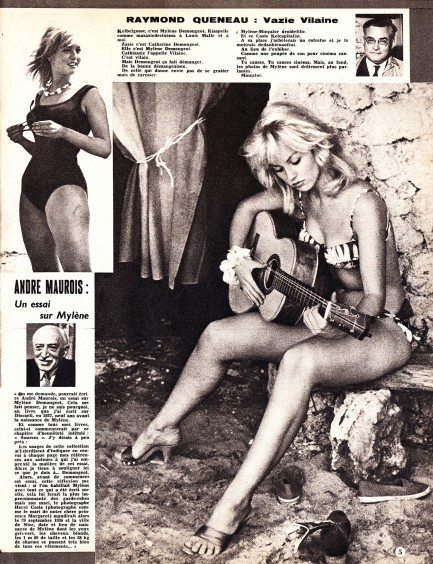 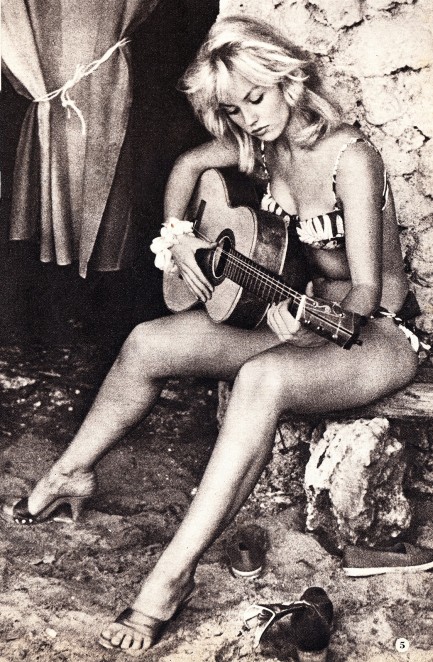
 Demongeot and her chambre of secrets. 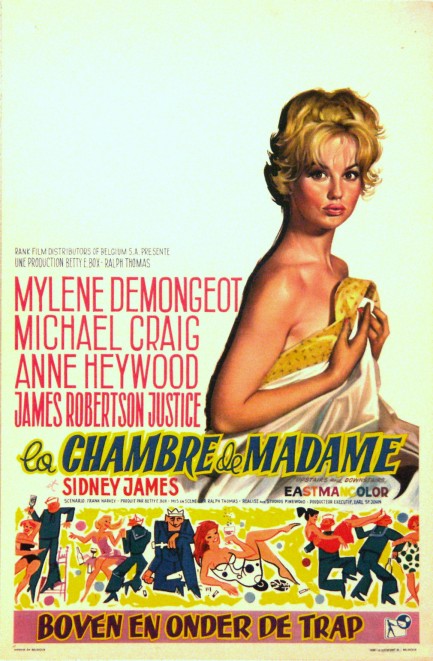
Above, a beautiful Belgian poster in French and Dutch for La chambre de Madame, aka Upstairs and Downstairs. We talked about it a while back. Shorter version—Mylène is the pause that refreshes.
 If you invite one into your house it's your own fault what happens. 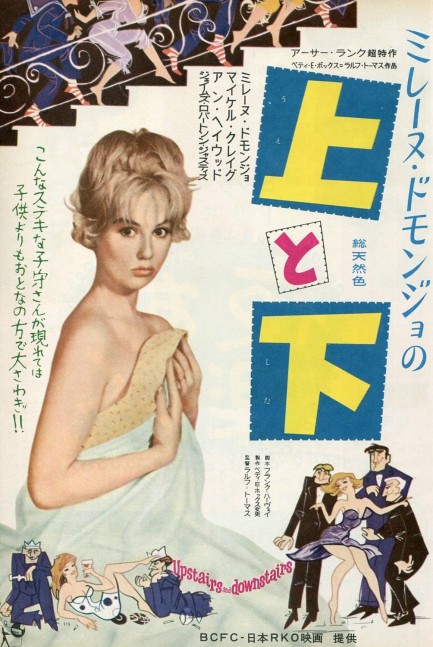
Here's yet another wonderful Japanese poster for an English language film, this time for Mylène Demongeot's lightweight comedy Upstairs and Downstairs, or “above and below,” as the poster calls it. We enjoyed this one. In London a newlywed couple run into problems when they decide to hire domestic help. After the likes of Claudia Cardinale, Joan Sims, and Joan Hickson bring chaos to the household (sharp-eyed viewers may also recognize nude model Marie Devereux), Demongeot is finally summoned to restore order. While she's an efficient domestic, she's a complication in other areas. Which ones? Those that provide blood flow to male loins.
This is Bardotesque/Monroesque screwball craziness fueled by double entendre and pratfalls, rather than the types of films we usually feature on Pulp Intl., but we couldn't resist this brilliant Japanese promo. Nor Demongeot, for that matter, who's one of our favorite French stars. She does good work here in a genre we've come to think of as oops-I-didn't-mean-to-turn-you-on. Below are some promo photos from the film, including an interesting shot of James Robertson in the Messerschmitt KR200 he drives in one scene. Upstairs and Downstairs opened in the west in late 1959 and premiered in Japan today in 1960. 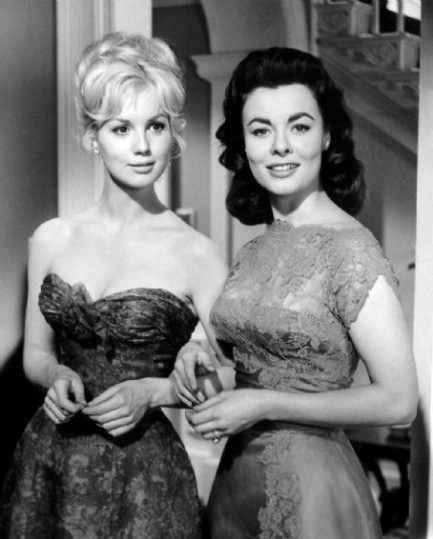 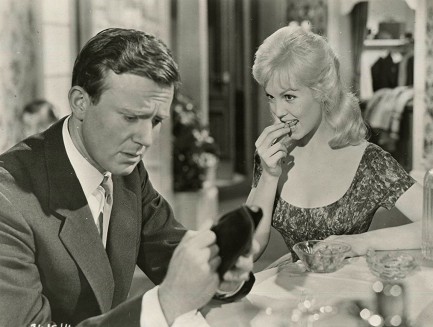 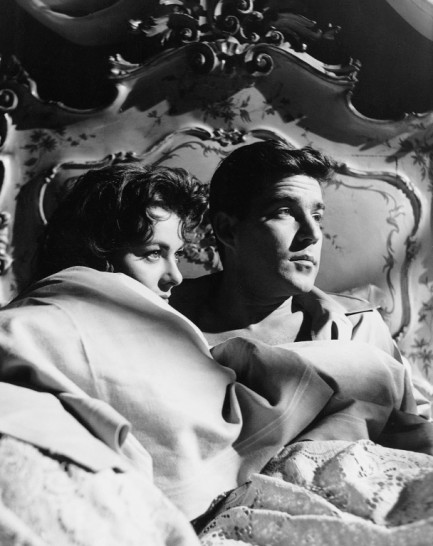 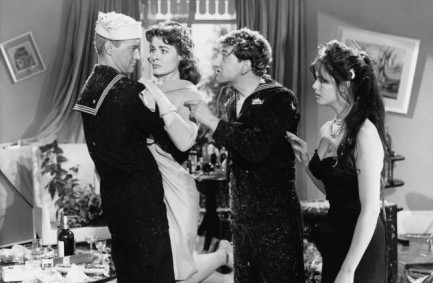 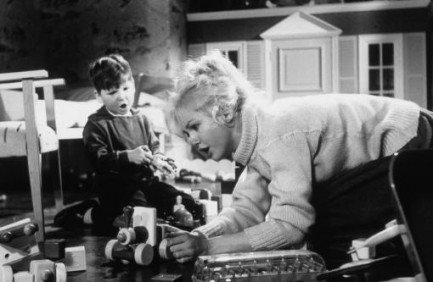 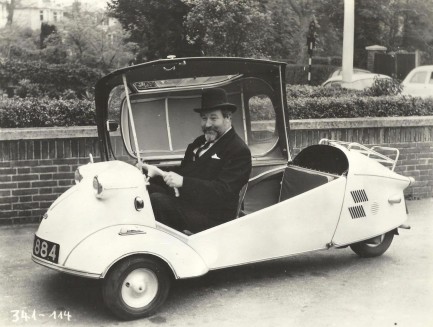 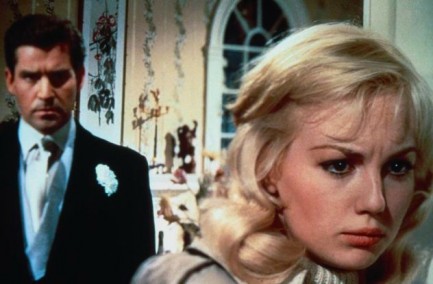 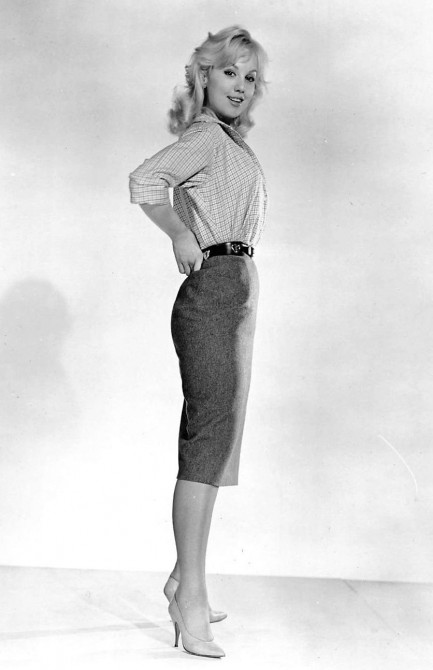 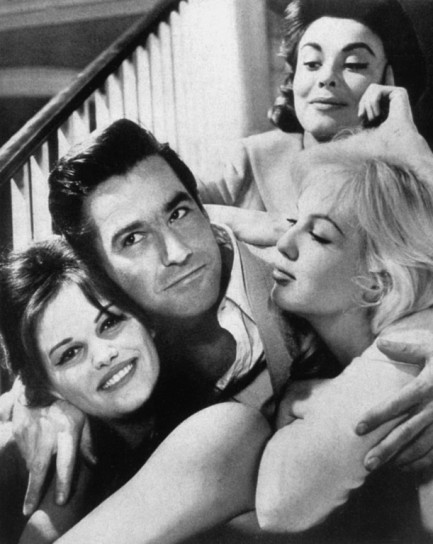 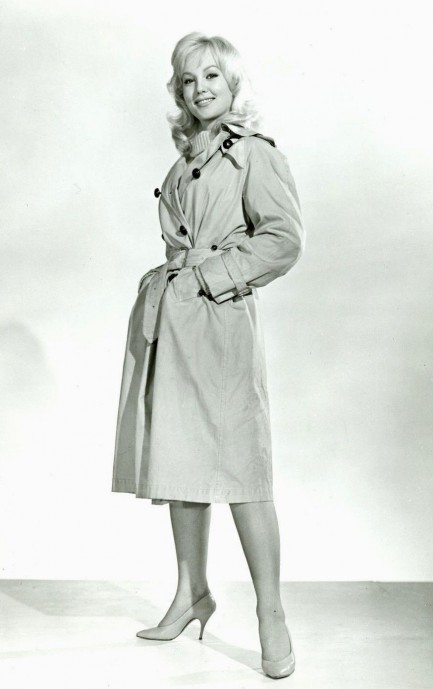 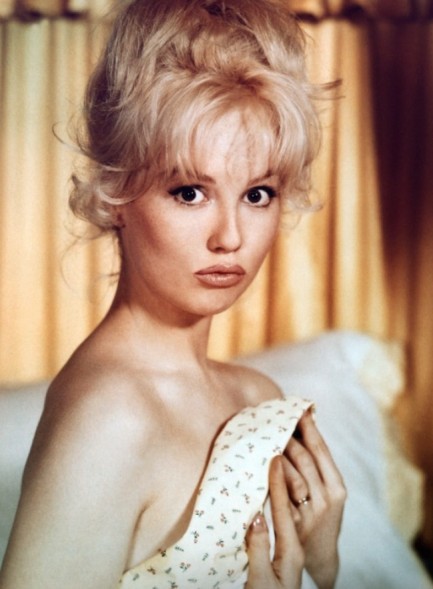
 I know I'm new to lifting, but are you sure a spotter is supposed to just sit there and stare at me? 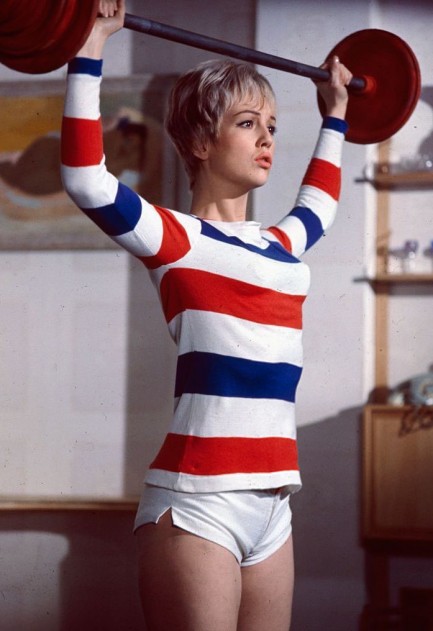
Unimprovable French actress Mylène Demongeot pounds the iron in this production photo made when she was filming the comedy Doctor in Distress in London in 1963. Mylène in impossibly short shorts was a sort of trademark, seemingly. See another example here.
 National Enquirer disappears Demongeot's midriff. 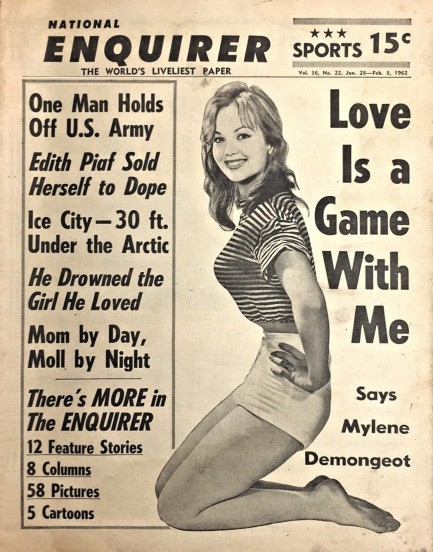
This National Enquirer with the amazing Miss Mylène Demongeot on the cover was published today in 1962, and it's a photo we've never seen of her before. Demongeot has always been a full-bodied woman by cinematic standards, so there's some clumsy retouching happening here. Why do such a thing? And to Demongeot, of all people? She can't possibly be improved, so why bother? But it's still a striking shot.
 Tate gives chase in an international fortune hunting comedy about a missing chair. 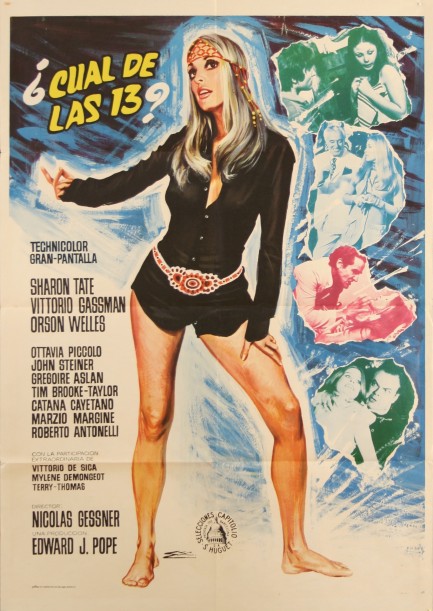
In ¿Las cual de 13?, aka 12 + 1, aka Twelve Plus One, an Italian barber played by Vittorio Gassman inherits thirteen chairs and, deeming them useless, sells them to a London antique shop. He later discovers one of the chairs contains a fortune, but when he returns to the shop he's told they've all been sold. So he offers the antique shop employee Sharon Tate half of the fortune to help him track down the chairs, which of course have scattered to the four winds. Their search takes them to Paris, Rome, and beyond, in 1960s screwball fashion with its expected pratfalls, mix-ups, and sticky situations. Gassman and Tate do reasonable jobs with the goofy script that's been made of Soviet authors Ilf and Petrov's satirical source novel, and the film is boosted by appearances from Vittorio De Sica, Mylène Demongeot, Terry-Thomas, and Orson Welles. This was an Italian production, but the poster above was painted for the film's Spanish run by Carlos Escobar, who signed his work “Esc.” This is the best we've ever seen from a very good artist. Since the movie didn't premiere in Italy until after Tate had been slain this month in 1969, and didn't reach Spain until mid-1970, the poster very likely was painted post-murder, which means Escobar probably was thinking of how to best portray someone who'd become a tragic figure. We suspect he put special effort into his work as a tribute, and if so, a fitting tribute it was. 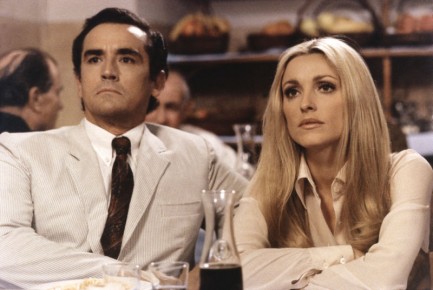 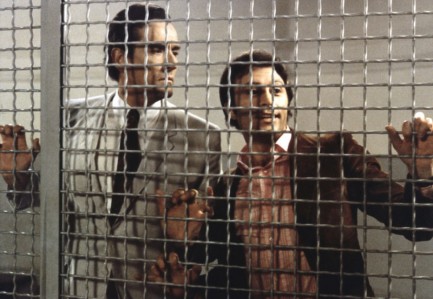 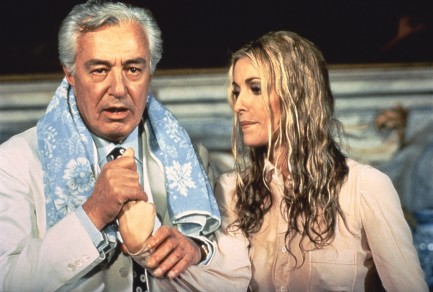 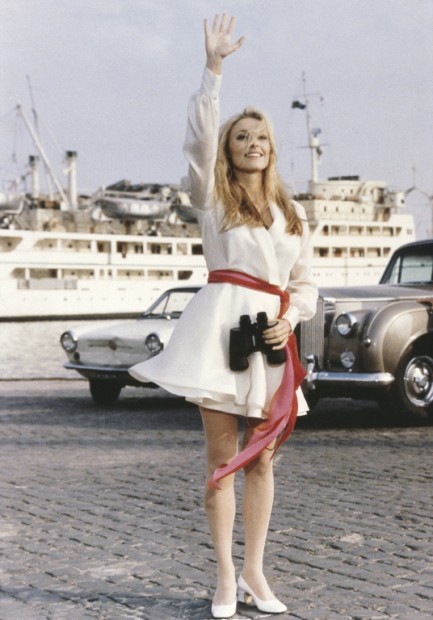
 Demongeot explains to Cinémonde how she aspires to inspire. 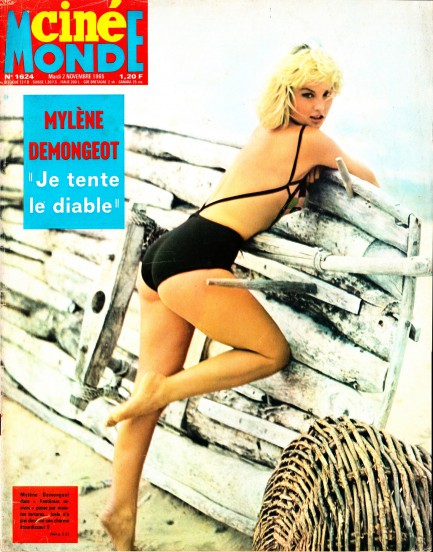
The French weekly Cinémonde debuted in October 1928, with the above issue hitting newsstands today in 1965 starring French goddess Mylène Demongeot on the cover. Inside, her feature is headed with the text “Il faut oser tenter le diable,” which means, “We must dare tempt fate,” and she goes on to say, “Il existe peut-être dix photographes au monde (seulement) à qui, pour nue... ou presque, une actrice puisse faire confiance,” or basically, “There are perhaps ten photographers in the world (only) who… (almost) naked, an actress can trust.” The literal translation reads a bit backward, but you get the drift—she of course means only a few photographers can be trusted to shoot an actress (almost) nude. One of those is apparently British director Terence Young, who helmed Dr. No and two other Bond movies, as well as Zarak and Wait Until Dark, and whose photography you see here. However Demongeot, after all this philosophizing about the (almost) nude form, does not appear (almost) naked in any of the photos. Still, she looks amazing, as always. She says at the end, “Je voudrais qu'il ait envie de les decouper et de les regarder longuement, avant de se coucher. Pour qu’il fasse de beaux rêves.” Something along the lines of wanting men to cut out her photos and look at them before going to bed… to inspire beautiful dreams. Well, we would have to use a laptop instead of cut out photos, and we’d do it, except we have a feeling our girlfriends would not let us get away with it. Of that we’re (almost) sure.
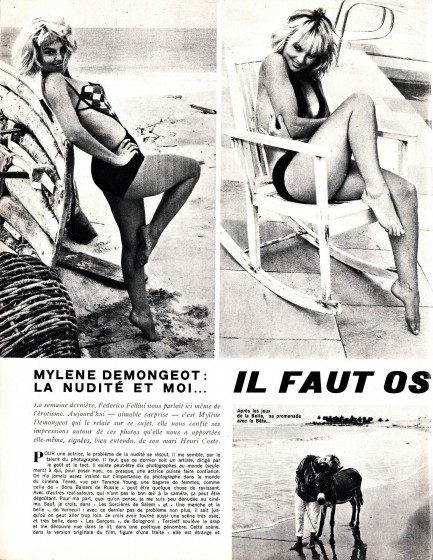 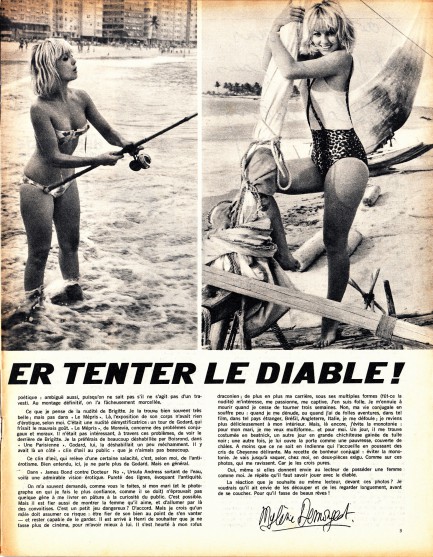 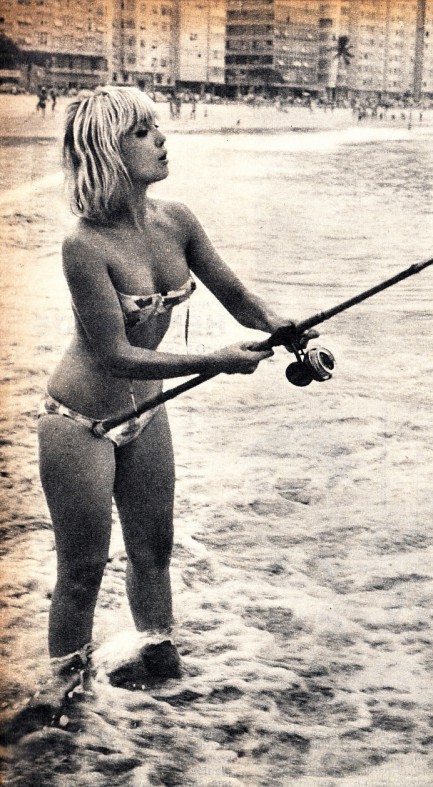
 They got wet and I suppose they shrank when they dried. But they still look okay, n'est pas? 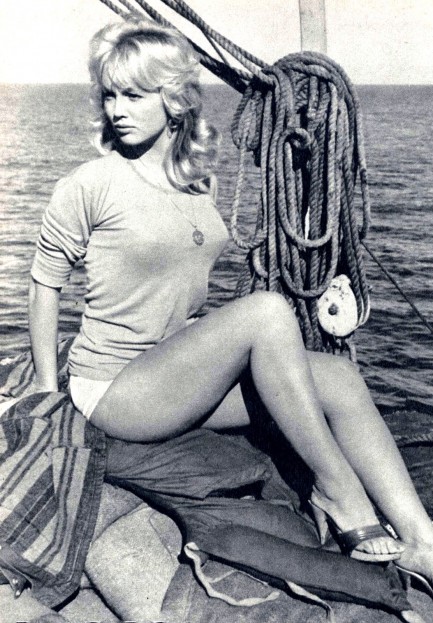
French vision of perfection Mylène Demongeot takes a break while filming the World War II drama Sotto dieci bandiere, aka Under Ten Flags in the Ionian Sea off the coast of Sicily in 1960. She's dressed in character as Zizi, a name we really love, and you're surely wondering how the filmmakers managed to fit a blonde sexpot wearing white spray paint for shorts into a war epic. Well, let's just say if you get all the other historical elements correct, adding a little sex appeal is Zizi. Below you see her putting the legs that launched a thousand fantasies into action, during a scene from the film in which she climbs aboard a boat using a cargo net and miraculously doesn't throw a shoe. You'd think one of those sailors would give her a hand, but then again, maybe that's just not possible. Some say Demongeot is no Bardot. We agree—she's all that and more. 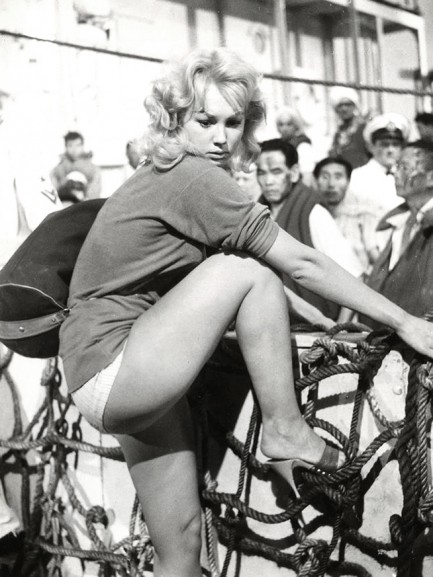 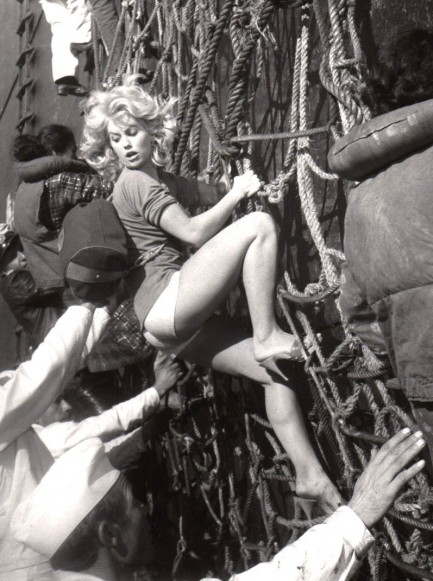

|
 |

The headlines that mattered yesteryear.
2003—Hope Dies
Film legend Bob Hope dies of pneumonia two months after celebrating his 100th birthday. 1945—Churchill Given the Sack
In spite of admiring Winston Churchill as a great wartime leader, Britons elect
Clement Attlee the nation's new prime minister in a sweeping victory for the Labour Party over the Conservatives. 1952—Evita Peron Dies
Eva Duarte de Peron, aka Evita, wife of the president of the Argentine Republic, dies from cancer at age 33. Evita had brought the working classes into a position of political power never witnessed before, but was hated by the nation's powerful military class. She is lain to rest in Milan, Italy in a secret grave under a nun's name, but is eventually returned to Argentina for reburial beside her husband in 1974. 1943—Mussolini Calls It Quits
Italian dictator Benito Mussolini steps down as head of the armed forces and the government. It soon becomes clear that Il Duce did not relinquish power voluntarily, but was forced to resign after former Fascist colleagues turned against him. He is later installed by Germany as leader of the Italian Social Republic in the north of the country, but is killed by partisans in 1945.
|

|
|

It's easy. We have an uploader that makes it a snap. Use it to submit your art, text, header, and subhead. Your post can be funny, serious, or anything in between, as long as it's vintage pulp. You'll get a byline and experience the fleeting pride of free authorship. We'll edit your post for typos, but the rest is up to you. Click here to give us your best shot.

|
|















